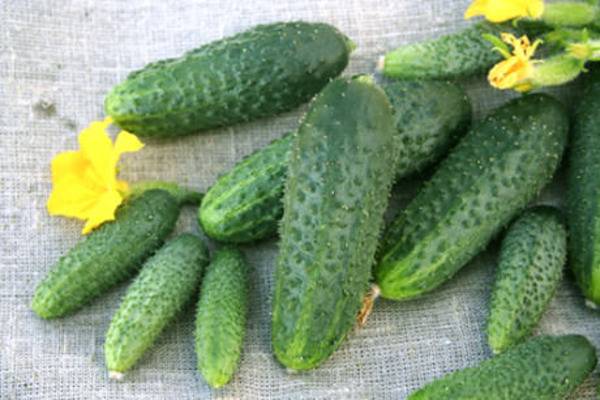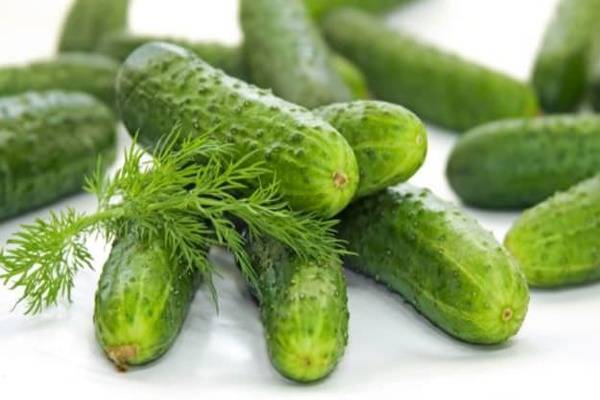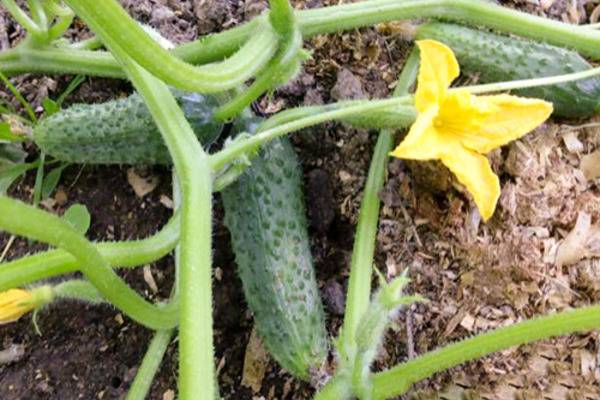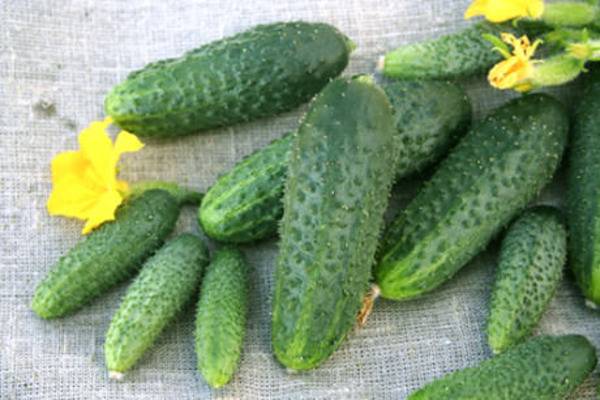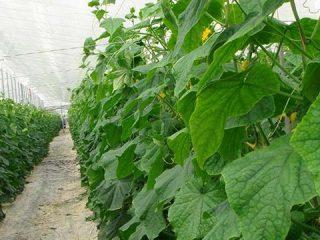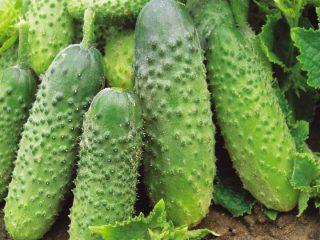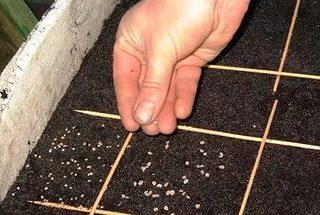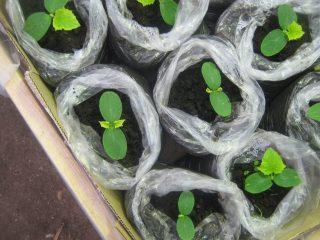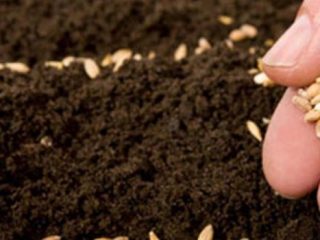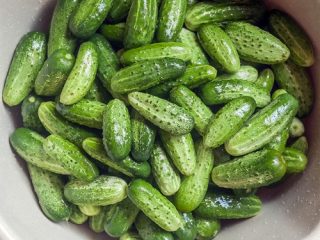Content
Literally all gardeners grow cucumbers. And, naturally, I want to start harvesting early. Therefore, early ripening varieties are chosen, the fruits of which are excellently used both fresh and for preservation.
Characteristic
Cucumber bushes of the Shchedrik F1 variety grow quite tall. They are distinguished by an average level of climbing, strong foliage, and a female type of flowering. In nodes, 2-3 ovaries are usually formed. The first harvest is harvested 47-50 days after germination.
Shchedrik F1 cucumbers ripen with a length of about 10 cm, a diameter of 3.0-3.7 cm. The fruits are distinguished by a tuberous surface, without thorns. Shchedrik F1 cucumber weighs on average 95-100 g (photo). According to reviews from summer residents, vegetables have thin skin and dense pulp without a bitter aftertaste.
Advantages of cucumber variety Shchedrik F1:
- the fruits are characterized by decent keeping quality and tolerate transportation well over long distances;
- the Shchedrik F1 variety is resistant to various diseases: powdery mildew, olive spot, root rot;
- appetizing appearance of the vegetable and excellent taste;
- Vegetables are great both fresh and canned.
The yield is approximately 5.5-7.0 kg per bush.
Planting seeds
Pollination is not required for fruit set, so Shchedrik F1 cucumbers are planted in various conditions (indoor greenhouse, greenhouse, open ground).
Growing in open ground
Shchedrik F1 cucumbers are quite demanding in terms of soil and growing conditions. Therefore, it is important to choose the right place for the garden bed - it should be well lit and protected from drafts. Suitable soil is breathable, medium loamy.
In the autumn, garden bed preparation includes several stages:
- dig holes 30-45 cm deep;
- lay drainage (small branches, straw, grass) and compact well;
- then spread a layer of fresh manure and leave the bed until spring.
To cull empty Shchedrik F1 grains, the seed is soaked for 15 minutes in salted water (take 1 tablespoon of salt per liter of water). The sunken seeds will be suitable for germination. To disinfect, the seeds are kept for 20 minutes in a solution of potassium permanganate (dark purple). They are then washed and dried.
The seeds are also hardened: placed on the bottom shelf of the refrigerator for 3 days. To ensure that the seeds are able to germinate, they are placed on a wet cloth and kept in a warm place. Shchedrik F1 seeds should hatch.
At the beginning of May, the holes are filled with fertile soil and covered with film. After a few days, the seeds are planted. The holes are made up to 2 cm deep. 4-5 Shchedrik F1 grains are placed in the moistened soil. Usually shoots appear after a week and a half.The beds must be weeded and thinned. Moreover, weak shoots are not pulled out, but pinched so as not to damage the remaining seedlings.
Seedlings for the greenhouse
When growing cucumbers of the Shchedrik F1 variety in regions with cold weather conditions, it is recommended to practice the seedling method. To do this, immediately prepare separate containers/cups with fertile soil. Before sowing, planting material is prepared:
- for hardening, the seeds of cucumbers of the hybrid Shchedrik variety are placed in the refrigerator for three days (on the bottom shelf);
- The soaking procedure is needed to hatch the seeds.
Hatched Shchedrik F1 seeds are placed in moistened holes up to 2 cm deep and sprinkled with soil. The containers are covered with plastic film or glass and placed in a warm place (temperature +28˚ C). As soon as the seedlings appear, the covering material is removed, and the containers with seedlings are moved to a warm and well-lit place. To create comfortable conditions for the growth of Shchedrik F1 seedlings, additional lighting is provided.
A week and a half before planting the cucumbers in the greenhouse, the sprouts begin to harden. To do this, plants are taken out into the open air for a short time, gradually increasing the time they stay outside. Seedlings 3-4 weeks old are planted in the greenhouse. The arrangement of bushes is 70-80 cm between plants and between rows.
How to care for cucumbers
If you follow the rules of agricultural technology, it is not difficult to achieve good yields of cucumbers of the Shchedrik F1 variety.
Watering rules
It is important to use only warm water, otherwise the plant roots may rot. Water cucumber beds only in the early morning or evening, when the heat of the day subsides. Moreover, it is advisable to use a watering can with a sprayer. If you use a bucket or hose, you can wash away the soil and expose/damage the root system of Shchedrik F1 cucumbers. If the roots are still exposed, it is necessary to spud the bushes.
The procedure should only be done early in the morning or in the evening, since if you sprinkle during the day, the leaves can get very burnt.
During the fruiting period, the watering schedule remains the same, but the volume of water is increased. It must be borne in mind that the yield of cucumbers of the Shchedrik F1 variety depends on the amount of liquid. However, on cool or cloudy days, watering is reduced slightly so as not to create stagnant water.
When growing cucumbers of the hybrid Shchedrik variety in a greenhouse, the watering rules are maintained, but sprinkling is not used. Since the temperature regime in a closed structure can be regulated by ventilation.
Application of fertilizers
In order for plants to gain green mass well at the beginning of the season and then produce a bountiful harvest, they need to be fed on time. Moreover, it is advisable to alternate the application of organic and inorganic fertilizers. There are several main stages of applying fertilizers:
- During periods of active growth and rapid growth of plant mass, the use of nitrogen is especially important. You can use both organic and inorganic mixtures. Alternatively – 1 tbsp. l ammophoska is diluted in 10 l of water.Or fresh bird droppings will do: half a liter of fertilizer is dissolved in 10 liters of water. Cucumbers of the Shchedrik F1 variety respond well to sifted wood ash - just scatter it on moist soil. Just don’t put ash on the leaves or stems;
- during flowering, the plant needs less nitrogen, so the following solution of mineral fertilizers is used: 30 g of ammonium nitrate, 40 g of superphosphate, 20 g of potassium nitrate per 10 l;
- During the period of active fruiting of Shchedrik F1 cucumbers, it is advisable to use a solution of a mixture of potassium nitrate (25 g), urea (50 g) in 10 liters of water.
To extend the fruiting time, it is recommended to carry out foliar feeding in early autumn. To irrigate cucumbers of the Shchedrik F1 variety, a urea solution is used: 15 g per 10 liters of water. And then you will be able to collect fresh cucumbers before the first frost.
Caring for cucumber beds
When growing cucumbers in open ground, it is recommended to install trellises. Thanks to this, the plants will be properly ventilated, and conditions will appear for uniform ripening of the crop. This will also greatly simplify the care of cucumbers of the Shchedrik F1 variety. The beds must be constantly weeded.
To prevent diseases, it is recommended to treat Shchedrik F1 cucumbers twice a season with modern fungicides (Quadris, Kuproksat). Such a measure will prevent infection of plants by harmful microorganisms and fungal diseases.
Even novice gardeners can harvest a decent harvest of cucumbers.You can start with the horizontal method of growing the Shchedrik F1 vegetable and gradually master the vertical method.
